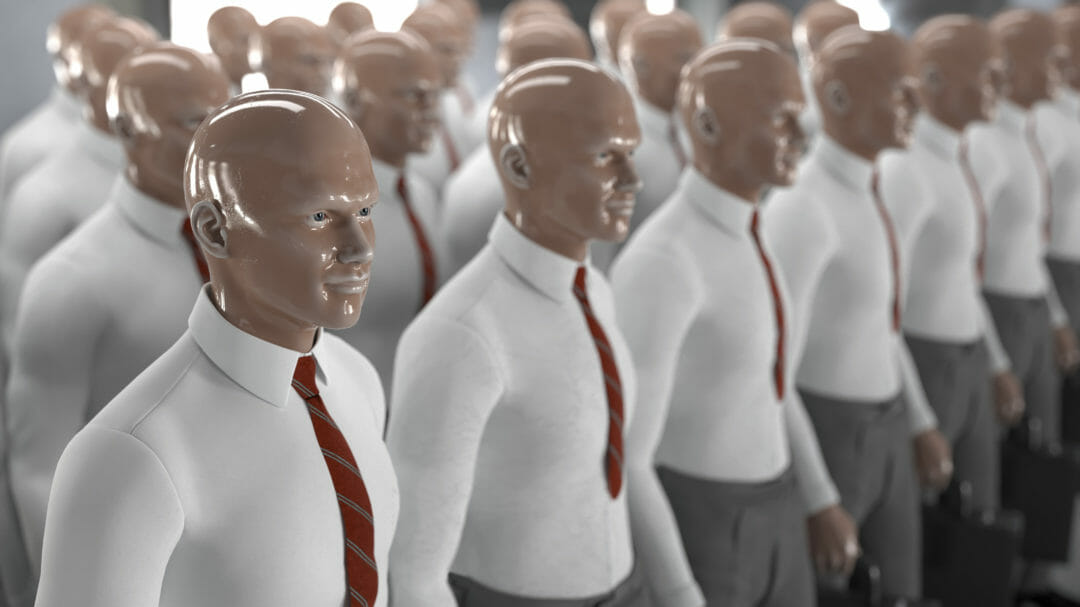As we enter the 2020s, human-machine collaboration will become increasingly normalised. Whether in the form of voice-based AIs, virtual assistants or physical robots, our digital co-workers will share our workloads, helps us align and coordinate as organisations, ultimately paving the way for a new era of super-productivity.
The advancement of machine learning often creates a polarising debate. On one side are those fearful of the ‘AI-pocalypse’ narrative set out by Hollywood. On the other are those eager to embrace an increasing role for machines and see an opportunity to work together.
While none of us can predict the future, new research shows that the majority of employees view AI more optimistically than Hollywood: as an opportunity, rather than a danger.
According to a global study of 4,000 workers by Automation Anywhere, 72% see AI as a technology that will “help them do their jobs better, not replace them.” What’s more, over half (57%) think that a greater degree of AI and automation would boost productivity.
Automating data science and machine learning for business insights
With AI taking on the role of ‘helper’ rather than replacement, successful collaboration with tomorrow’s digital teammates will be central to the future of work. For businesses, building a culture that supports collaboration – including human-machine cooperation – has never been more important.
Collaborating with machines
The benefits of collaborative working range from greater organisational alignment to higher productivity, autonomy and increased morale. Greater use of smart assistants in the workplace has the potential to ‘supercharge’ this further, boosting everything from teamwork to creativity.
Machines excel at tedious – but necessary – administrative tasks. In the blink of an eye, they can recall that long-forgotten document or analyse billions of data points to uncover patterns that a human would take years to spot.
But while machines outperform us in a handful of areas, they lack the emotional intelligence to make complex judgements. When it comes to personal relationships and creative tasks, humans hold all the aces.
To successfully collaborate with our digital co-workers, we must play to each others strengths and weaknesses. That way, humans and machines can elevate the other’s skills and capabilities.
Research by Gartner reveals that, “By 2022, one in five workers engaged in mostly non-routine tasks will rely on AI to do a job.” Applying AI to routine work will see human-machine collaboration perform more effectively than if either worked alone. What’s more, it will leave us free to concentrate on what really matters: career progression, maintaining a healthy work-life balance and doing our best work.
Business-ready bots
Newspaper headlines announcing that an AI has learned to drive a car, paint a portrait or bake a cake often overshadow one of AI’s most valuable applications: assistant bots.
As we forge closer bonds with AIs, bots will come to personalise and streamline a huge variety of business communication and different workflows.
Bots mark the end of voice, or do they?
Take Capgemini’s Applied Innovation Exchange for example. To tailor the onboarding experience to each employee’s needs, AIE created a custom Slack bot named Cleo. Based on the responses to a series of simple questions, Cleo sets new users up with the tools and channels relevant to their respective role. So, a developer will automatically get access to key software development or collaboration tools, for example. This frees up a huge amount of time previously spent on manually setting-up new joiners, allowing teams to focus on more meaningful and creative work.
These essential, but low-complexity jobs are exactly where we’ll see collaboration with bots increase in the coming years. And, businesses that do so will reap the benefits. Going back to Automation Anywhere’s research, AI-augmented companies not only “enjoy 28% greater performance levels”, but also scored 33% percent higher on factors deemed to make a workplace more ‘human’.
Communication tools that enable these integrations will therefore become ever more essential. Rather than email inboxes, which by their nature limits both each person’s view and the ability to integrate communication with other apps or bots, communication will shift to channels. Channels are designed to correspond to any project and can integrate with bots and other apps to provide a holistic, interactive, searchable knowledge hub for an organisation.
Working with machines, not against them
Industries will adopt AI and automation at their own pace. But one thing is clear: To thrive in the complex future of work, organisations need to adopt a collaborative culture and the tools that enable it for the coming age of the machine-augmented team.
Collective wisdom has an important role to play in these future relationships, too. In the future, machines fed a diet of human insights will evolve to help businesses in new ways. They will become more useful, optimise job completion and create opportunities for more interesting work. Far from limiting us, the more we teach digital co-workers, the faster they will set us free us from the ‘daily grind’.
“No matter how much technology can improve something, we will also need human creativity, collaboration and reflection,” notes Dr Margaret Heffernan, entrepreneur and TED talk speaker. “The really important thing is that our workplaces must be organised in such a way as to develop people’s ability to work together, to grow and explore.”
Treat machines as colleagues rather than tools, and humans can become ‘superpowered’ through human-machine collaboration and the resulting greater organisational alignment. After all, shouldn’t all teams run like a ‘well-oiled machine’?








